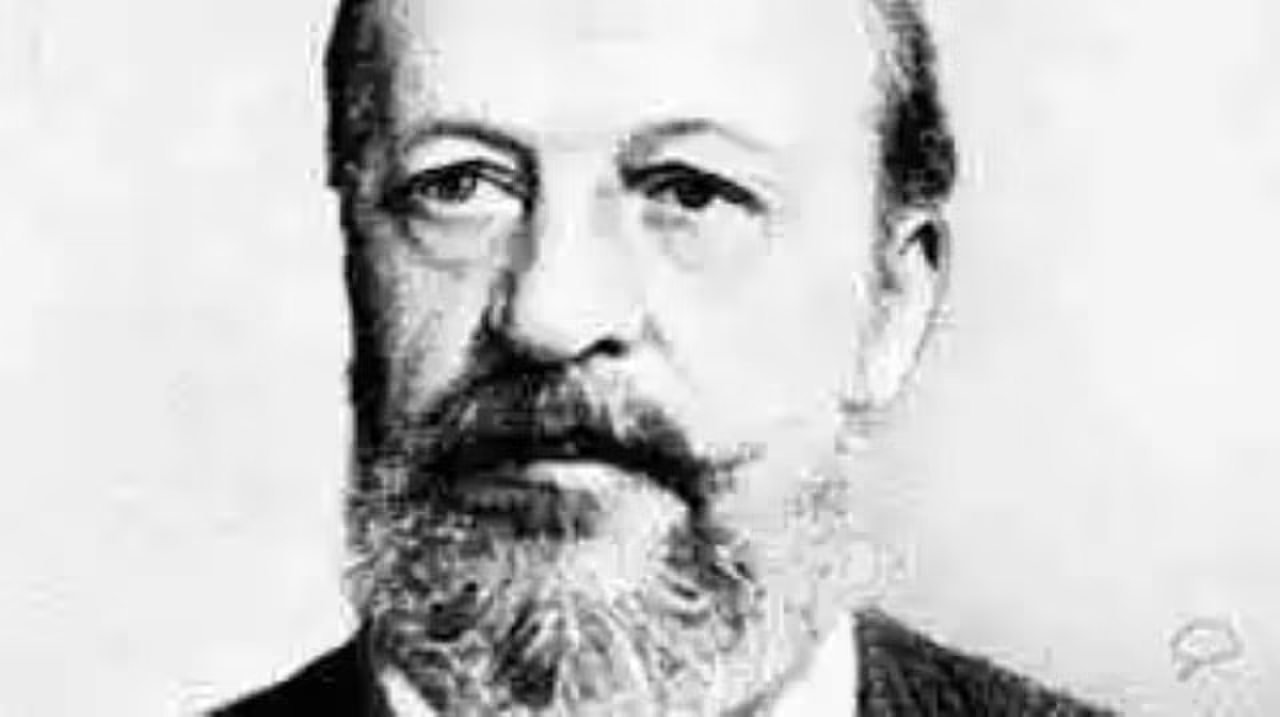Nikolaus August Otto (10 June 1832 – 26 January 1891) ( 10 June 1832 – Nassau-Holzhausen, Cologne). Scientist, Inventor and engineer of German origin, recognized for having created the first internal combustion engine of four strokes, bringing to the industry the first practical and efficient alternative to the steam engine.
Likewise, his invention had great impact in the world of the automotive industry, paving the way to make these machines efficient and powerful, and opening a new chapter in the industrial age, which is why he is considered one of the most influential 20th-century influencers.
Early life
Nikolaus Otto was born on 10 June 1932 in Holzhausen auf der Heide, Germany, into a humble family. His father was a postman and his mother a housewife. However, he lost his father shortly after he was born, being left in the care of his progenitor.
During his early years as a student he excelled for his good grades, so his mother decided to send him to a technical school. However,the economic crisis that hit Germany in 1848, after the failure of the German revolution, caused Otto to begin his trade steps, starting at an edible store as a salesman.
Internal combustion engine
On one of his many trips, Otto met the gasoline engine, created by Etienne Lenoir, which was an alternative to the steam engine, although it was very noisy, the fuel used was difficult to store because it was in a gaseous state and produced too much Heat.
Otto concluded that the efficiency of the mechanical device would increase if the fuel were liquid. He then designed and manufactured a carburetor for that engine, among other improvements. In 1861, he tried in vain to patent his carburetor in Prussia. That same year, he managed to design a gasoline-powered engine.
Three years later, in 1864, he met Eugen Langen, an entrepreneur interested in industrial technology, who became interested in Otto’s engine, proposing that they join. They created the NA Otto and Cia, and began working improving the engine, as well as in building a factory that would allow their bill.
In 1867, during the Paris Exhibition, they had the opportunity to publicly present their invention, which won a gold medal, when they demonstrated that the engine was running, using half the energy used so far by known engines.
Orders fell like rain on Langen and Otto’s company, which was unable to meet high demand. They then teamed up with investor Ludwig August Roosen-Runge.
In 1869 the company moved to Colonia Deutz and changed its name to Langen-Otto-Roosen. Likewise, Lagen convinced them to invest in the sugar business. The investment multiplied more than tenfold, and in 1872 they created the Gasmotoren-Frabrik Deutz AG.
However, having not invested any capital, Otto lost his partner position, working under contract, for Langen, Roosen-Rungen and the new partners. They were also hired as engineers Gottlieb Daimler and Wilhelm Maybach.
In 1876, they managed to manufacture the engine invented by Otto, forever changing the engines to internal combustion, and making Deutz the first industry to manufacture and design engines in Europe.
Four-stroke engine
However, the engines created by Otto based on Lenoir’s design tended to vibrate a lot, produce a lot of noise and have limitations on the energy produced.
Otto concluded that the key was in a better use of fuel, and that the way to achieve this was to implement the use of one piston per chamber,taking the combustion process to four phases, known as Otto’s four strokes, made up of a first Admission phase, followed by Compression, Explosion and Escape.
It also implemented within its engine the concept of stratified load, which allowed operation to be less noisy. Its four-stroke engine was welcomed with great success, and he did not know his stratified cargo theory, which was dismissed and rediscovered by the Honda Motor Company, almost a century later, in 1970, proving that Nikolaus Otto was a forward man in time.
Loss of Patent
The company’s success and demand for engines rose like foam. At the height of the Industrial Revolution, they received factory applications from all over the world. Between 1876 and 1889 they sold about 8,300 engines.
His invention was so novel and visionary that it was a long time before other engine manufacturers could meet and imitate him, having full control of the manufacture and use of the design of the four-stroke engines.
However, in 1884, Otto’s cycle patent was revoked, when it was discovered that a French engineer, Alphonse Beau de Rochas, had devised the same system, even though – unlike Otto – had not built an engine, had not followed paying for patent permanence.
Deutz’s competitors brought the case to court, even though Beau de Rochas had never defended his authorship, making the Gasmotoren-Frabrik Deutz AG lose the exclusive use of four-stroke engines. The only place where they managed to hold the patent was in England.
Late years
In 1882, Daimler and Maybach decided to leave the company and form one of their own. His first invention was to implement the use of Otto’s engine in a horse-drawn carriage, giving rise to the first four-wheeled carriage.
Eight years later, in 1890, they managed to market their first vehicles, called Daimlers. A year later, in 1891, Nikolaus Otto died. At the time of his death he had great wealth, due to the gains that his creation produced.
The factory he created with Lagen eventually became the Klockner-Humboltd-Deutz AG, one of the pioneering in-burner engine manufacturing industries.
Image source: monografias.com








